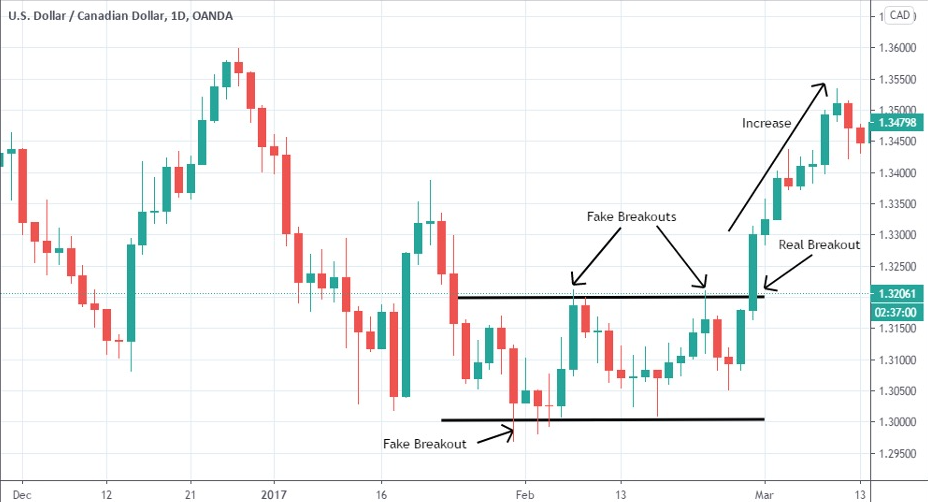Breakout trading is used by active investors to take a position within a trend’s early stages. In general, when correctly managed, this technique can offer little downside risk and serve as the foundation for significant price movements and volatility expansions. We’ll explain the structure of this trade in this article and provide some tips for handling this trading approach effectively.
What is a Breakout?
A breakout occurs when a stock price moves with higher volume outside of a designated support or resistance level. When the stock price breaks over resistance, a breakout trader enters a long position; when the stock price breaks below support, a breakout trader enters a short position.
Volatility tends to rise and prices typically trend in the direction of the breakout once the stock trades above the price barrier. Because breakouts represent the beginning point for future volatility rises, significant price swings, and, frequently, significant price trends, they are a crucial trading approach.
In every kind of market situation, breakouts take place. Usually, channel breakouts and price pattern breakouts like triangles, flags, and others produce the most dramatic price moves.

How to Trade Breakouts: Step-by-Step Guide
Choose the Candidate: Keep an eye on stocks that have developed robust levels of support or resistance. Keep in mind that higher results come from stronger support or resistance. Be careful to keep this in mind when you go stock shopping.
Wait for the Breakout: Just because you have a solid prospect doesn’t imply you should make a deal right now. Await the stock price’s move with patience. On the day that the stock price moves outside of its support or resistance level, wait until the conclusion of the trading day to enter the market to ensure that the breakout will hold.
Set a Reasonable Objective: If you are going to take a trade, set an expectation of where it is going. If you don’t, you won’t know when to exit the trade. Do this by calculating an average move the stock makes or measure the distance between support and resistance when trading price patterns.
The most important step is to let the stock retest. An old resistance level turns into a new support when the stock price breaks it. An old level of support turns into new resistance when a stock breaks it. After the first few days, the stock will test the level it has breached in most of your trades. Get ready for it.
Recognize When Your Trade or Pattern Has Failed: A pattern or breakout has failed when the stock tries to retest a previous level of support or resistance and breaks back through it. At this point, you must accept the loss. Don’t gamble with your losses. Trades to exit when the market closes: At the open, it is impossible to predict if prices will stay at a specific level. For this reason, you might think about holding off on leaving a losing transaction until close to the market closure. It’s time to exit a trade and go on to the next one if a stock has held firm outside of a predefined level of support or resistance when the market closes.
Be Patient: This tactic calls for a great deal of patience. You will be less emotional and more analytical while making a trade if you follow these steps.
Exit at Your Target: You are in the trade if you are not leaving it with a loss. Until the stock price hits its objective or you hit your time target without hitting your target price, you should stay in the deal.
Is Breakout Trading Worth It? Pros, Risks, and Final Insights
The key to successful breakout trading is early momentum detection. Which occurs when a price, frequently supported by a spike in volume, pushes above important support or resistance levels. As prices rise, traders can profit from strong trends if they get in on the move early, moving long above resistance or short below support.
This strategy’s potential for quick profits is what makes it appealing. However, not all breakouts are sustained. The game involves false signals, which can cause losses and rapid reversals if you’re not ready.
For this reason, having a good plan, controlling risks, and having the patience to wait for clean setups are crucial. When executed properly, breakout trading is a proactive strategy for staying ahead of the curve rather than merely a reactive one.
This article was originally published on InvestingCube.com. Republishing without permission is prohibited.


